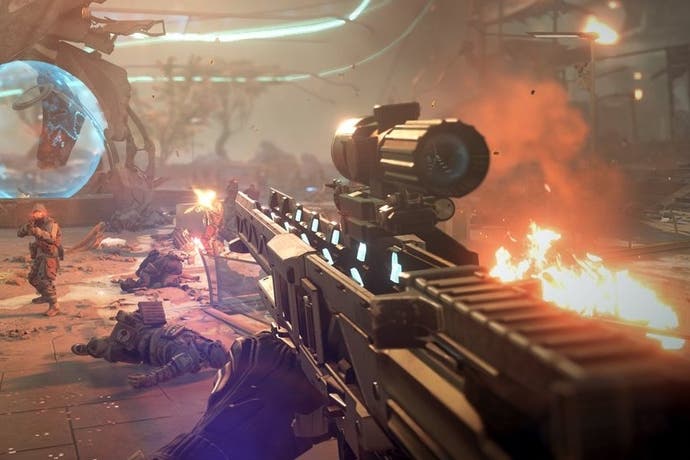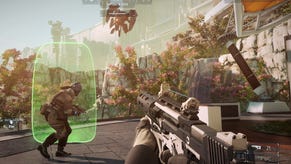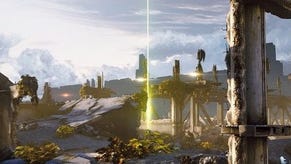Judge allows lawsuit over Killzone Shadow Fall's 1080p graphics to proceed
But will Sony fight in court?
The lawsuit over Killzone Shadow Fall's graphics may yet go to court.
In August we reported on a class action lawsuit that accused Sony of misleading gamers when it said Guerrilla Games' PlayStation 4-exclusive first-person shooter would run at a native 1080p resolution.
After the game's release alongside the PS4 last year, Eurogamer's Digital Foundry found Shadow Fall's multiplayer runs at 960x1080 with a "high quality temporal upscale". Essentially, the game was using information from previously rendered frames to plug the gaps.
Killzone developer Guerrilla Games addressed this matter at the time with the following distinction:
"In both SP and MP, Killzone Shadow Fall outputs a full, unscaled 1080p image at up to 60fps. Native is often used to indicate images that are not scaled; it is native by that definition.
"In Multiplayer mode, however, we use a technique called 'temporal reprojection,' which combines pixels and motion vectors from multiple lower-resolution frames to reconstruct a full 1080p image. If native means that every part of the pipeline is 1080p then this technique is not native.
"Games often employ different resolutions in different parts of their rendering pipeline. Most games render particles and ambient occlusion at a lower resolution, while some games even do all lighting at a lower resolution. This is generally still called native 1080p. The technique used in Killzone Shadow Fall goes further and reconstructs half of the pixels from past frames."
The plaintiff, Douglas Ladore, accused Sony of "deceptive marketing". Sony had sought to have the lawsuit thrown out in a motion filed in October, arguing its representations about the graphics weren't false, that Ladore didn't adequately plead reliance on any alleged misrepresentation, that the game doesn't fall under the California Consumer Legal Remedies Act and that the "economic loss rule" bars Ladore's tort claim for negligent misrepresentation.
But on Tuesday this week a judge in the US ruled the lawsuit could proceed. US District Judge Edward Chen denied all but one of Sony's arguments, saying its motion to dismiss was "premised on an unduly narrow reading of plaintiff's complaint".
"The substantial majority of the arguments Sony raises in its motion to dismiss can be rejected for two simple reasons," the Judge said.
"Either Sony's arguments ignore important factual allegations that are well pleaded in Ladore's complaint, or Sony's arguments require this court to construe the complaint in the light most favourable to Sony, rather than Ladore, who is entitled to the benefit of all reasonable inferences at this stage of the proceedings," Chen wrote (via Courthouse News - you can check out the ruling here).
The one successful argument on Sony's part revolved around the economic loss rule, since Ladore hadn't asserted any noneconomic losses stemming from buying the game.
The crux of the matter appears to revolve around the word "native". In his order, Judge Chen admitted Sony "may ultimately" be correct that Killzone outputs video in 1080p in multiplayer mode, but stressed that Ladore does not allege Sony misrepresented the final output resolution of the game. The allegation is that Killzone's multiplayer graphics are not originally created or rendered in 1080p, so the output cannot be considered native 1080p.
"Instead, Ladore alleges that Sony relied on a technological trick to turn lower resolution graphics into graphics that, in Sony's own words, appear 'subjectively similar' to native 1080p," Judge Chen continued, "but which by Ladore's account were 'blurry' and subpar."
The suit is being handed by law firm Edelson, who previously took action against EA for failing to provide free digital copies of Battlefield 1943 with every purchase of Battlefield 3, as it was advertised, and it handled the class-action lawsuit against Sega and Gearbox for Aliens: Colonial Marines' less than stellar quality.
Ladore has 30 days to file an amended complaint.










